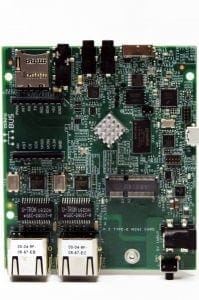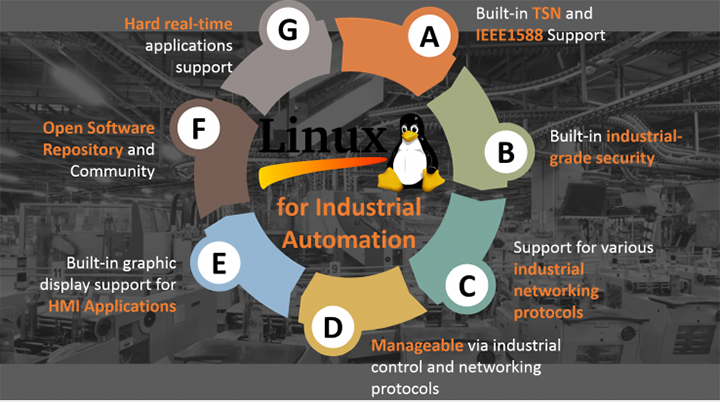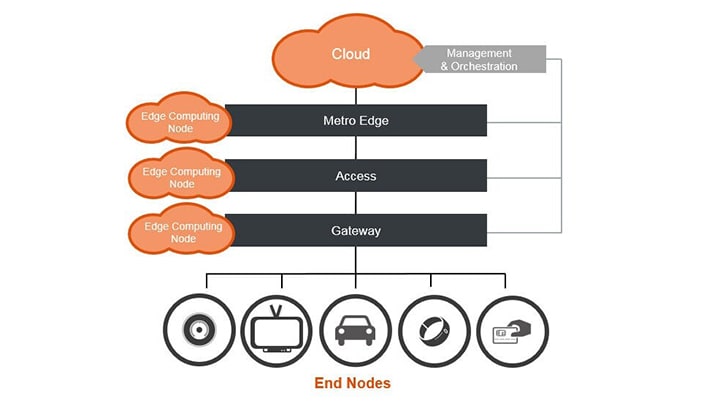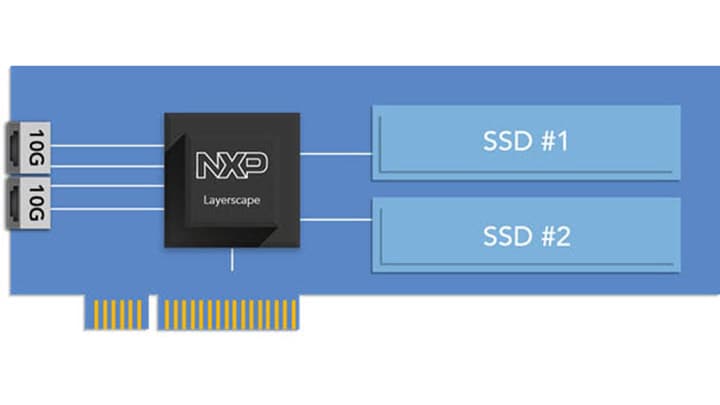I recently had a water-cooler debate with a colleague about whether
edge-computing frameworks are as general as their cloud counterparts or are
limited to event-driven data processing. I ultimately concluded that edge
frameworks can be fully general after having looked at Microsoft’s
Azure IoT Edge. Azure IoT Edge hosts not only serverless functions but also
containers. Edge-computing customers, therefore, can run rich
container-encapsulated applications at the edge just as they do in the cloud.
A cloud-based system manages the applications regardless of location.
For this to work, the edge-computing platform must meet a few prerequisites:
- Support for server-like Linux distributions, such as Ubuntu
- Support for container environments, such as Docker
- Ability to remotely and securely provision edge hardware
-
Ability to securely provision and manage functions and containers running on
edge hardware
This is where NXP comes in. Our Layerscape processors are well suited to edge
nodes because of their performance, integration, 64-bit Arm®
compatibility and scaling from single-core to 16-core devices. They also
include virtualization support and our trust architecture, features we have
refined over multiple product generations.
But, a cool chip is just a glittering sliver of silicon until software unlocks
its potential. We, therefore, complement our Layerscape processors with
software to address each prerequisite above. Our
Layerscape Software Development Kit
(SDK) includes drivers, tools and libraries enabling Layerscape processor
features. For the operating system, we combine a Linux kernel with an Ubuntu
user-land environment. The kernel is a long-term-support (LTS) release and
includes drivers and other features specific to our processors that we have
provided upstream. If a processor or feature is too new for its enablement to
have been upstreamed, we offer kernel patches. The kernel also supports
containers—the lightweight approach favored in cloud computing of
bundling the code, libraries, tools and settings required of a rich
application. Like the kernel, the Ubuntu environment is also an LTS release and
it includes standard user-space libraries and applications. The benefit of
this NXP-supplied software environment is that developers see a standard
server-like Linux environment, even when the hardware is a palm-sized system
such as our FRWY-LS1012A
board or the upcoming SMARC and Q7 computer-on-modules Kontron
plans to develop based on the Layerscape
LS1028A
and
i.MX 8
platforms.

FRWY-LS1012A board Image
Provisioning hardware and software can be tricky. Here we turn from the server
model to the smartphone model in which only authorized devices connect to the
network and firmware updates are secure and automatic. This is challenging
because edge-computing nodes don’t have the user interface of a
handset, and an IT manager might have a thousand nodes to commission. We also
want application installation to be as easy as with a smartphone. However,
instead of pulled down to the device from an app store in the cloud, software
is pushed from the cloud down to the edge nodes.
Our trust architecture is a key underlying technology enabling authorization
of devices and secure updates. Recapping previous blog posts, at the
architecture’s heart is a hardware root of trust, including secure key
generation and storage. Additional secure capabilities branch out from this
root. For example, it helps enable secure enrollment because each
Layerscape-based node can attest its unique identity in a cryptographically
secure fashion. Conversely, the node can cryptographically verify that an IT
manager approved the downloaded firmware. The node similarly can verify
functions and containers pushed from the cloud.
As noted above, making this work requires software, both on the edge node and
in the cloud to manage edge nodes and their firmware throughout their
lifecycle. At the same time, this software can’t get in the way of
providing a server-like OS environment or a standard edge-computing framework
like Azure IoT Edge.
In summary, NXP and our collaborators, such as Microsoft, offer OEMs a
tremendous starting point for their own edge-computing creations. Our hardware
and software is scalable and secure, providing a server-like environment,
secure enrollment and device monitoring and secure container and application
deployment. The resulting edge-computing solutions can be as general as their
cloud-based counterparts, streamlining the development and deployment of
applications regardless of their hosts’ location and enabling the
reduction in latency and data transmitted off premises that motivates edge
deployments.





